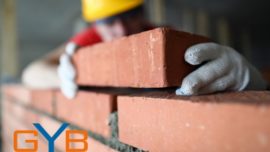
Society is constantly moving toward creating more sustainable ways to live, work, build and grow, and with recent advancements in environmental awareness, your home renovation can do the same.
By adapting to the most current, cutting edge and even the more simplistic approaches to sustainable architecture that are taking the world by storm at the moment, you can change your home forever.
The key to unlocking this idea of sustainable home renovations is easier to find than you think, too. Simple and yet incredibly effective changes here and there mean you home is more eco-friendly than ever before, and that’s great for you, your wallet, and the planet all at the same time.
These are just some of the best ways to start.
1. Deconstruct and not Demolish
One thing that is often inevitable when it comes to a home renovation is a small amount of demolition. Whether it’s creating open plan areas, creating access, lighting or removing walls, wastage occurs in a range of different forms. This is counterproductive to sustainable architecture right off the bat, but, it doesn’t have to be wastage.
Utilising these materials and resources to create new facilities is an incredible way to maximise your efficiency if you can do, but even if not, there are better choices than landfill. Care and planning beforehand can often even result in being able to give materials to others, to be recycled, and to be sold in other cases too.
(Do remember though, these may not always be salvageable).
2. Energy Efficient Appliances/Electrics
While on the topic of creating efficiency in place of old resources, don’t forget that your electrical applies are often up there with the largest inefficiencies in the house as well. Things like fridges, freezers, oven and washing machines are often some of the most used electrical appliances in an entire household. When these are outdated or even low quality, inefficiency becomes rife, and they can put a serious dent in your carbon footprint.
When the renovation does being to take place it helps to always be on the lookout for more sustainable means of living, even when built in to architectural design. Check the EPC rating of your potential replacements, think about the longevity of what you’re purchasing, and try have a general well-rounded view of what the new electricals will do to your sustainable approach.
3. Insulation & Heat
On top of the appliances not being as sustainable as they could be when you’re planning a new eco-friendly home renovation, it’s also a very wise move to consider how other features of your home are performing in their efficiency too. Having inefficient materials and systems in place is one of the biggest areas of long-term unsustainable energy use after all, and usage for everything tends to soar as a result.
The biggest culprits in this situation come from things like insulation, windows, boilers, and radiators, as these things all massively impact your internal climate. Once your architectural designer is briefed on your sustainable home goal, it becomes much easier to consider strategic window placement for sunlight utilisation, higher efficiency insulation materials, optimised and advanced heating systems, and glazing options as well.
4. Efficient Energy Supply (solar power, heat pumps)
One thing that is tying a lot of the factors in our sustainable home renovation together is, of course, energy. Utilising energy in the most intelligent ways from the most sustainable sources is key to all of this too, after all. That mostly comes down to heating and electricity.
To ensure these areas are considered when creating your sustainable renovation plan, always give thought to renewable and sustainable energy means that can be applied to your home. Solar panels are a great example to start with, as well as heat pumps which use underground heat that is transferred to your home. This is even better utilised with underfloor heating, but it all adds up to more efficiency.
5. Technology Adoption (smart meters, smart homes, efficient toilets and sinks)
Finally, the last point on the list to make your home renovation as sustainable as physically possible, there is also the option of smart technology and the latest designs to consider utilising in your home. The 21st century has seen some incredible advancements in the home technology industry, and it all helps contribute to the most efficient home possible by creating on-demand requirements without the need for guesswork and timers.
The most popular ways to go about this area are with smart tech. Things like smart home thermostats, lighting, and even sockets that can be controlled from mobile devices to switch both on and off can be inedible for minimising energy usage and being able to monitor it too. Couple that new systems like low usage shower designs and flush systems to minimise water waste, and you’re doing just about everything possible to make a change for the better.
Conclusion
Ultimately, a renovation can be as sustainable as you like it to be, but do remember how these things will impact your budget and your designs in order to justify what will work. Although many of these implementations will be great money-savers in the long run, the prices may be higher than the architectural work alone.
Whatever changes you choose; ensure they are designed by professionals who are understanding of their importance. This can last the rest of your life, after all.





